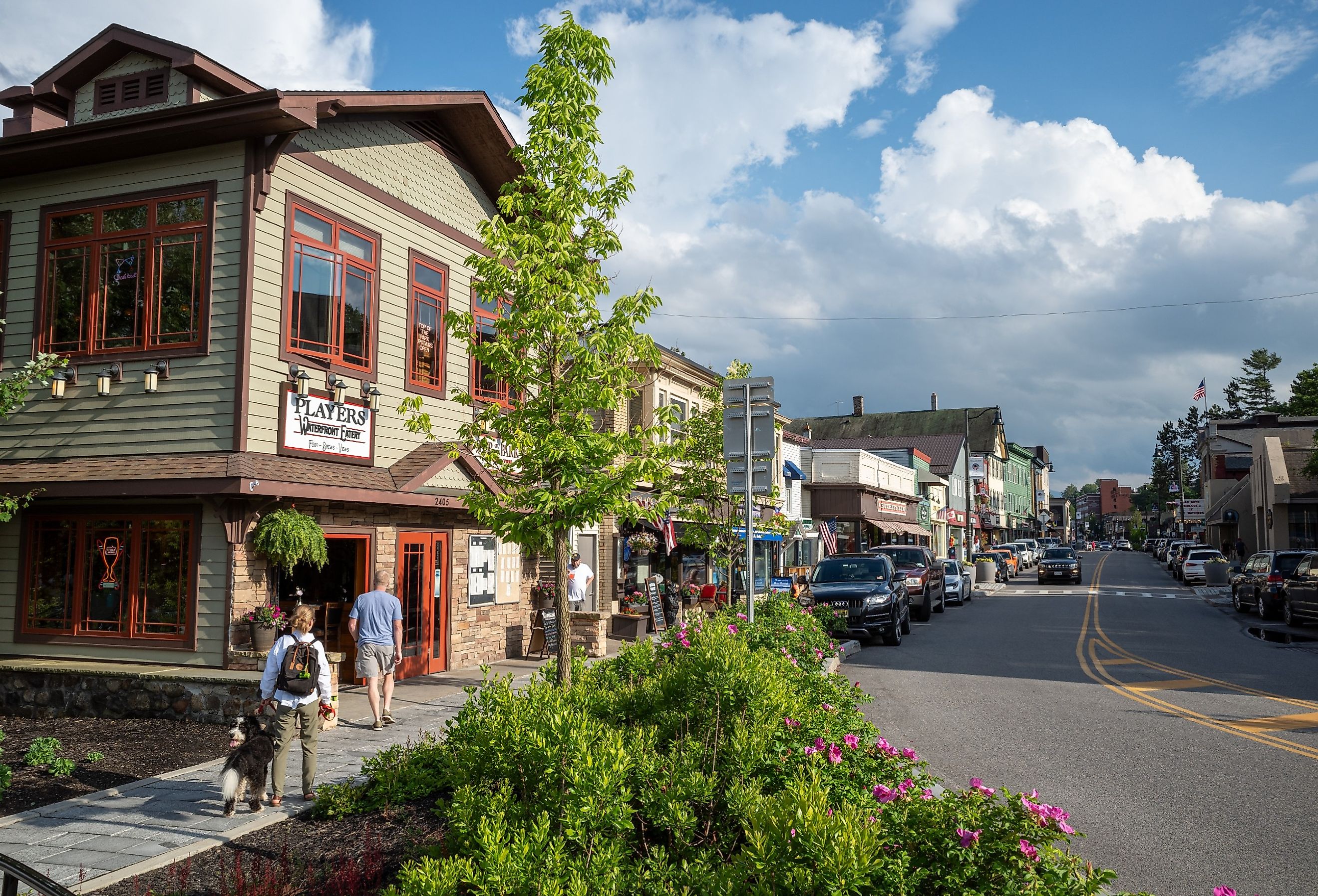
12 of the Most Charming Small Towns to Visit in New York
New York State, often synonymous with the bustling metropolis of New York City, is far more than its skyline and urban energy. Beyond the city limits, New York unfolds into a diverse tapestry of landscapes that include lakes, forests, and mountains. Within this varied landscape lies a collection of small towns that embody the state's historical, cultural, and natural diversity. From Woodstock to Skaneateles, these twelve towns each possess their own special charm, with histories that trace back centuries and scenic beauty that captures the essence of rural New York.
Woodstock
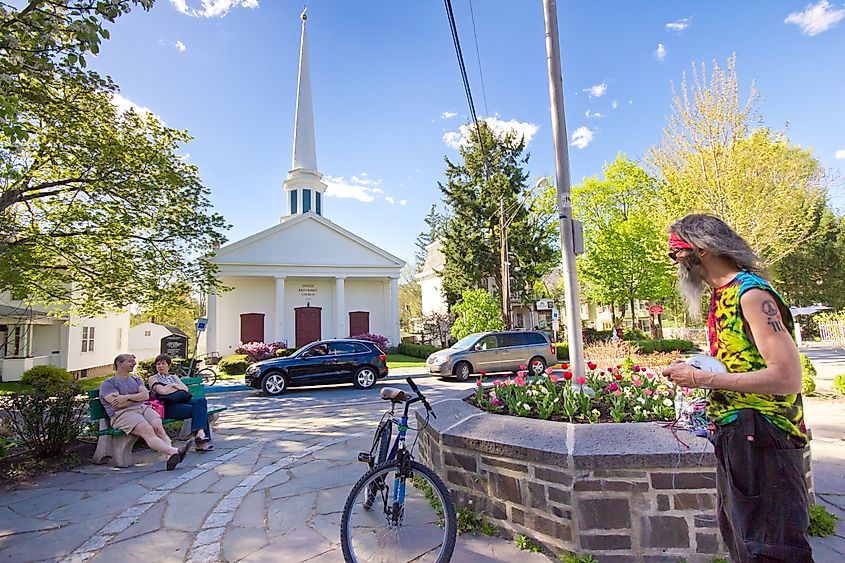
Woodstock, founded in 1787, is widely known for its art colony and the 1969 music festival that bore its name (though the festival was actually held in Bethel, NY). This small town in Ulster County has long attracted artists, musicians, and writers, establishing itself as a cultural hub in the region. Its setting in the Catskill Mountains has further added to its natural beauty.
Woodstock’s charm can be best experienced through a visit to Overlook Mountain, which is home to scenic hikes and panoramic views of the surrounding area. The Ashokan Reservoir, just outside the town, is another nature spot where visitors can appreciate its waters and nature trails. The Woodstock Artists Cemetery, a historic site, is a space for reflection. It is also a connection to the town's artistic roots.
Aurora

Aurora, on the eastern shore of Cayuga Lake, was founded in the late 18th century and became a prosperous village thanks to its agricultural economy and position along the Erie Canal. The village is also home to Wells College, established in 1868 by Henry Wells, the founder of the Wells Fargo Company. Aurora's well-preserved architecture is a glimpse into its affluent past, with stately homes lining its quiet streets.
Nature lovers can explore the views of Cayuga Lake at Long Point State Park, which has opportunities for boating, fishing, and hiking along its scenic trails. The nearby Montezuma National Wildlife Refuge is an essential stop for birdwatching among its landscape of marshes and wetlands. History enthusiasts may enjoy a tour of the Aurora Inn, a historic hotel that dates back to 1833.
Lake Placid
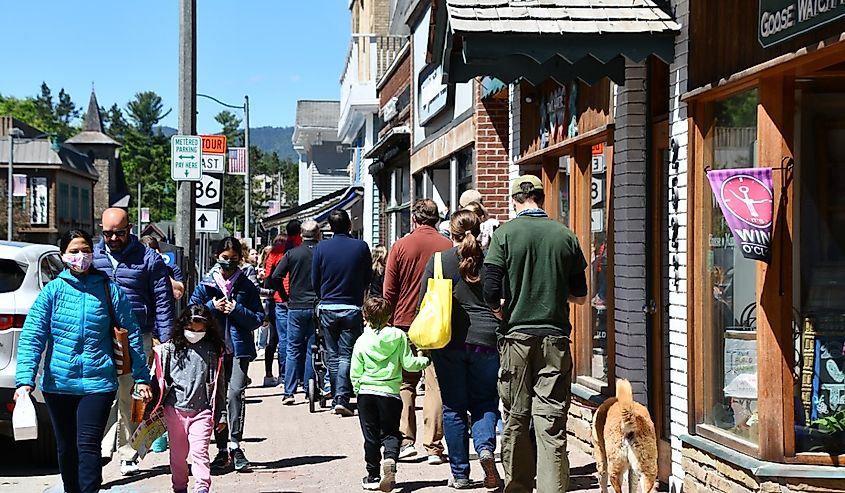
Lake Placid, nestled in the Adirondack Mountains, is most famous for hosting the Winter Olympics twice, in 1932 and 1980. Founded in the early 19th century, Lake Placid has long been a destination for outdoor enthusiasts and those seeking retreat from the city's bustle. Its location in the High Peaks region of the Adirondacks makes it one of the most scenic and historically significant towns in upstate New York.
Visitors can hike to the summit of Mount Jo, a relatively easy climb that offers views of the High Peaks and Heart Lake. Mirror Lake, located in the center of town, is an ideal spot for kayaking or leisurely walks along its perimeter. The John Brown Farm State Historic Site, located just outside of Lake Placid, is the burial site of the famous abolitionist and offers insight into the area’s connections to the anti-slavery movement.
Sleepy Hollow

Sleepy Hollow, made famous by Washington Irving’s short story The Legend of Sleepy Hollow, has a history dating back to the late 1600s when it was settled by the Dutch. Located along the Hudson River, this small town became an important trading and agricultural hub in the colonial period. Today, it retains much of its historic charm, with landmarks that pay homage to its past.
For those visiting Sleepy Hollow, a must-see is the Sleepy Hollow Cemetery, where Washington Irving himself is buried. The nearby Old Dutch Church, one of the oldest in New York, is a historic backdrop for exploring colonial history. Lastly, the Rockefeller State Park Preserve has an extensive network of hiking trails, woodlands, and meadows. It is a perfect destination for nature enthusiasts.
Greenport
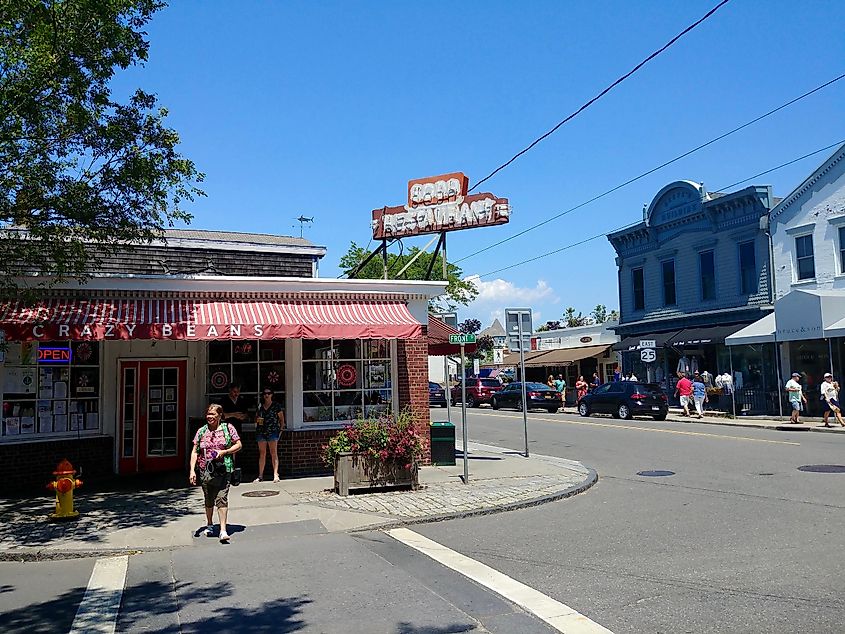
Greenport, located on the North Fork of Long Island, was first settled in the 17th century and became an important whaling and shipbuilding town in the 19th century. Its waterfront location made it a port for maritime trade, and its history is deeply tied to Long Island’s coastal economy.
Exploring Greenport’s natural surroundings can begin with a trip to Orient Beach State Park, located a short drive away. This park has beaches, tidal marshes, and woodlands—a perfect spot for birdwatching and hiking. The nearby Mashomack Preserve, located on Shelter Island, has over 2,000 acres of protected land for hiking and wildlife observation. Lastly, the Horton Point Lighthouse, standing since 1857, has scenic views of the Long Island Sound and is a glimpse into the area’s maritime past.
New Paltz
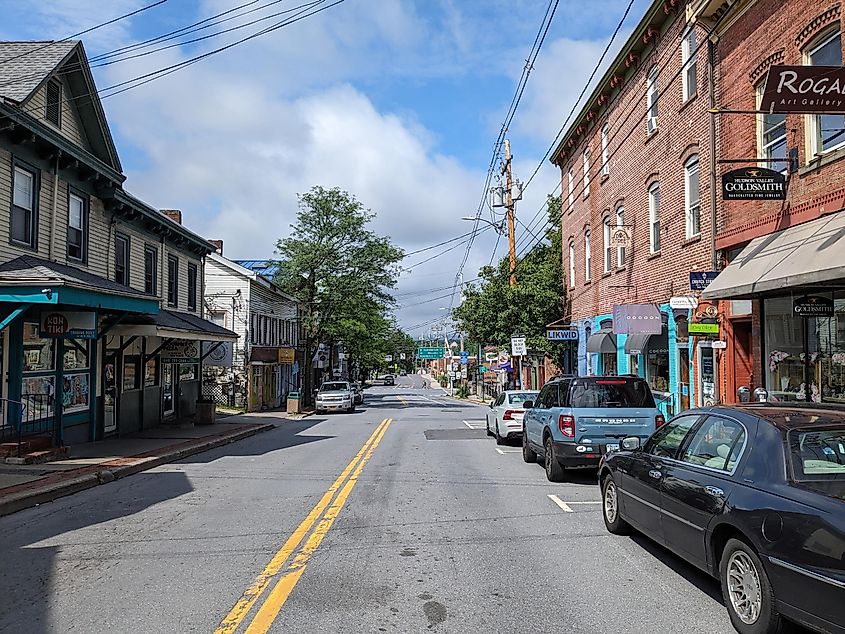
New Paltz, settled in 1678 by French Huguenots, is a historic town located in the Hudson Valley. Its founders left a significant architectural legacy in the form of stone houses, which can still be seen today. The town grew into a farming community and played a role in the region's agricultural development. Its proximity to the Shawangunk Ridge has also made it a popular destination for outdoor activities.
Visitors can start by exploring the Mohonk Preserve, a vast area with miles of trails for hiking, rock climbing, and mountain biking. It has views of the Hudson Valley. The Minnewaska State Park Preserve is another must-visit, known for its lakes, waterfalls, and extensive trail network. For a historic experience, the Historic Huguenot Street allows visitors to tour original stone houses and learn about the town's early settlers.
Watkins Glen
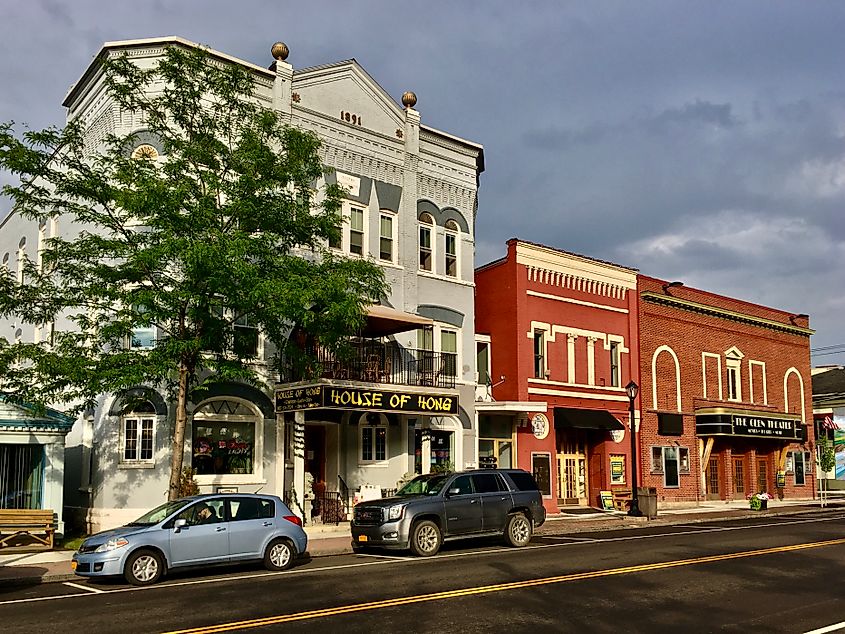
Watkins Glen, located at the southern tip of Seneca Lake, has a history rooted in its natural landscape. Founded in the early 19th century, the town gained fame for Watkins Glen State Park, which features a series of gorges and waterfalls that have been carved out by glaciers over millennia. The area became a tourist destination in the mid-1800s, drawing visitors to its nature and later to its car racing events.
The centerpiece of Watkins Glen is Watkins Glen State Park, with its gorge trail featuring 19 waterfalls and dramatic cliffs. Visitors can also explore the nearby Finger Lakes National Forest, with trails that wind through diverse landscapes of woodlands and pastures. For a more tranquil experience, Seneca Lake has opportunities for boating, fishing, and lakeside relaxation.
Cooperstown
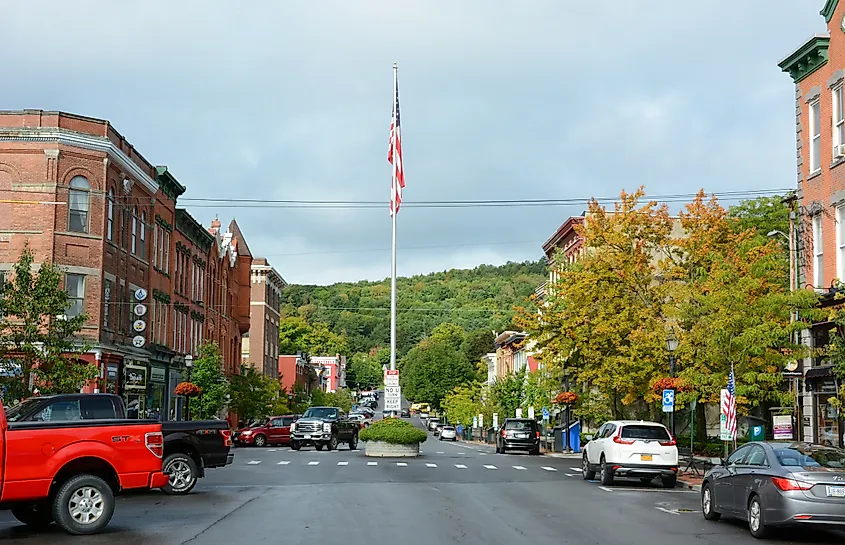
Cooperstown, founded in the late 18th century by Judge William Cooper, is best known as the birthplace of baseball and home to the National Baseball Hall of Fame. The town, located at the southern tip of Otsego Lake, also has deep cultural and historical significance, with connections to literary figures like James Fenimore Cooper, the son of the town’s founder and author of The Leatherstocking Tales.
Visitors should take time to explore the Glimmerglass State Park, which is home to views of Otsego Lake and miles of hiking trails through forests and open meadows. The Fenimore Art Museum is another highlight, showcasing American folk art and Native American artifacts. Finally, the Hyde Hall Historic Site, located within the park, is an early 19th-century mansion that gives insight into life in the region during the post-Revolutionary period.
Saranac Lake
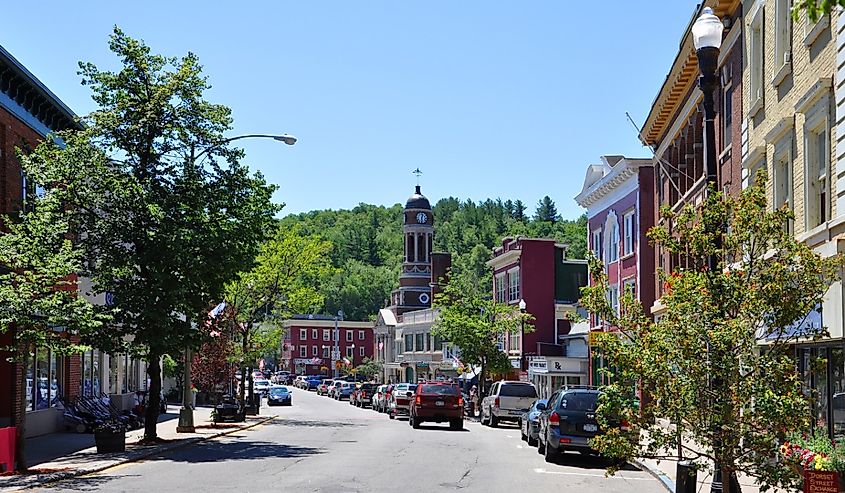
Saranac Lake, settled in the early 19th century, is a village in the Adirondack Mountains. Originally a logging town, it gained fame as a health retreat in the late 1800s, thanks to Dr. Edward Livingston Trudeau, who established the first sanatorium for tuberculosis patients here. The village has since evolved into a popular destination for outdoor enthusiasts and those seeking peace amidst its scenic lakes and mountains.
Visitors can enjoy the natural beauty of the area by exploring the Adirondack Scenic Railroad, which takes guests on train rides through the mountains. The nearby Adirondack Park has countless opportunities for hiking, canoeing, and wildlife observation. Saranac Lake itself hosts a range of water activities, including kayaking and fishing, especially in the summertime.
Saratoga Springs
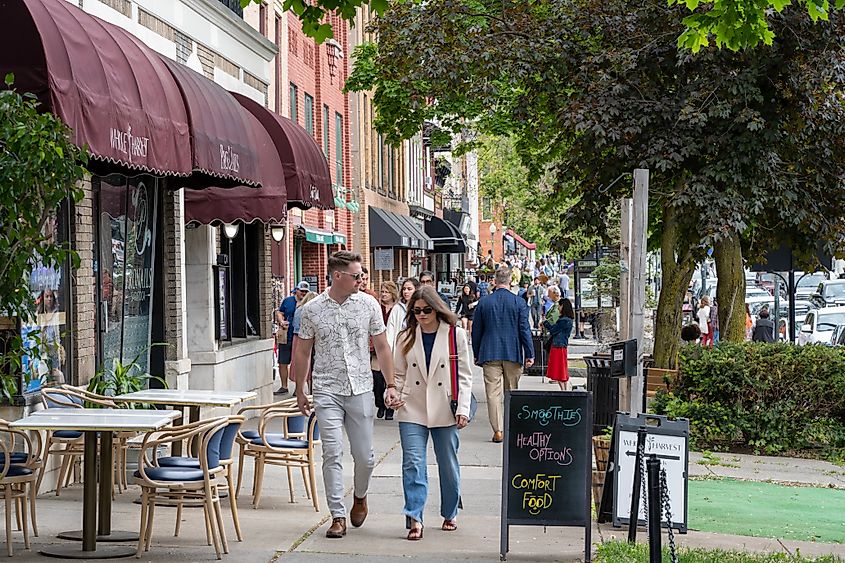
Saratoga Springs, founded in the early 19th century, has long been known for its mineral springs and healing waters, making it a popular destination for health tourism. The town grew rapidly in the 1800s with the addition of horse racing, and today, it is home to the Saratoga Race Course, one of the oldest and most prestigious horse racing tracks in the United States.
While in Saratoga Springs, visitors should not miss Saratoga Spa State Park, which offers mineral baths, hiking trails, and historic buildings. Another outdoor attraction is Yaddo Gardens, a peaceful setting filled with beautiful rose gardens and fountains. Lastly, Saratoga National Historical Park is a must-see for history enthusiasts. It marks the site of the famous 1777 Battle of Saratoga, a turning point in the American Revolution.
Skaneateles
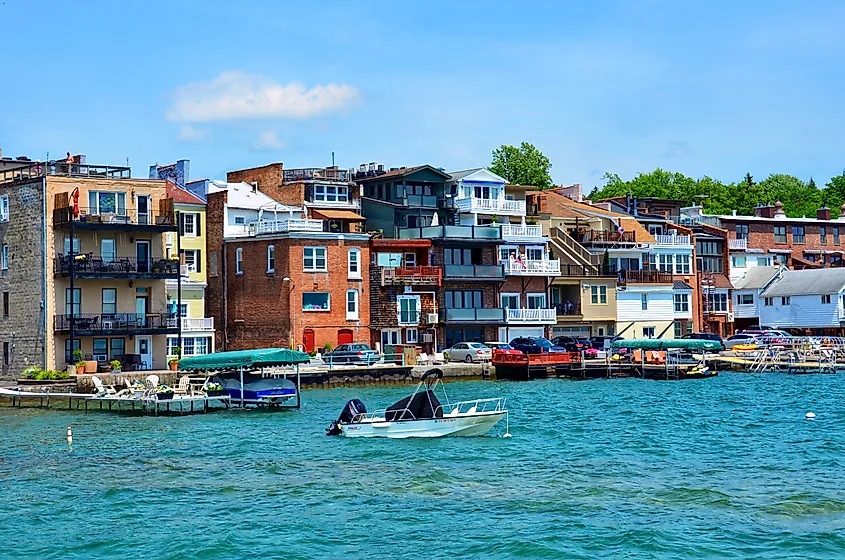
Skaneateles, located in the Finger Lakes region, was settled in the late 1700s and developed into a prosperous village known for its lakefront setting. Skaneateles Lake, one of the cleanest lakes in the country, has been the centerpiece of the town’s identity for centuries, attracting both tourists and wealthy residents.
In addition to enjoying the lake itself, visitors can head to Anyela's Vineyards, where they can tour the vineyard and sample local wines while enjoying views of the surrounding hills. The nearby Carpenter Falls is great for hiking, with trails leading through forests to a cascading waterfall. History lovers can also visit the Skaneateles Historical Society Museum at The Creamery, which has exhibits on the town’s history and local industry.
Schenectady
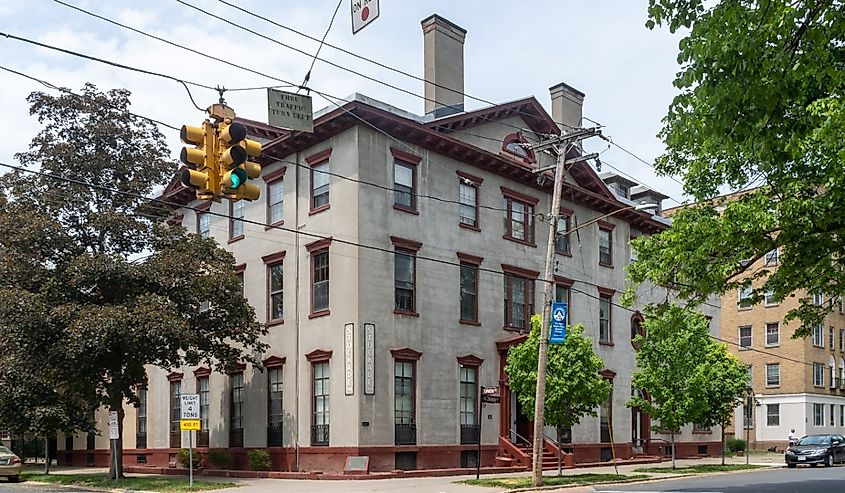
Schenectady, originally settled by Dutch colonists in 1661, has a long and storied history, integral to the development of New York State. As a major player during the Industrial Revolution, Schenectady earned the nickname "The City that Lights and Hauls the World" because it became the headquarters of General Electric and the American Locomotive Company. Its location along the Mohawk River also made it an essential stop for trade and transportation.
Visitors to Schenectady should explore the nearby Central Park, a large green space that has walking trails, gardens, and recreational areas. For those interested in history, the Stockade Historic District is a look into colonial architecture, with homes dating back to the 17th century. The Mabee Farm Historic Site, located just outside of town, is the oldest farm in the Mohawk Valley and offers insight into early Dutch farming practices and life.
New York's charming small towns give visitors a different impression of the Empire State. From the Dutch colonial architecture of Schenectady to the waters of Skaneateles Lake, these towns provide a diverse range of experiences. Whether exploring historic sites, hiking scenic trails, or simply enjoying the quietness of a small-town setting, visitors will find that each of these twelve towns has something unique to offer. These destinations not only serve as a retreat from the busyness of modern life but also stand as enduring testaments to New York's cultural and natural heritage.











